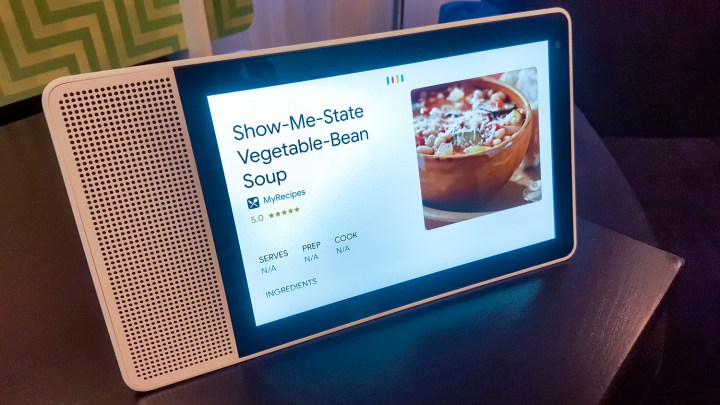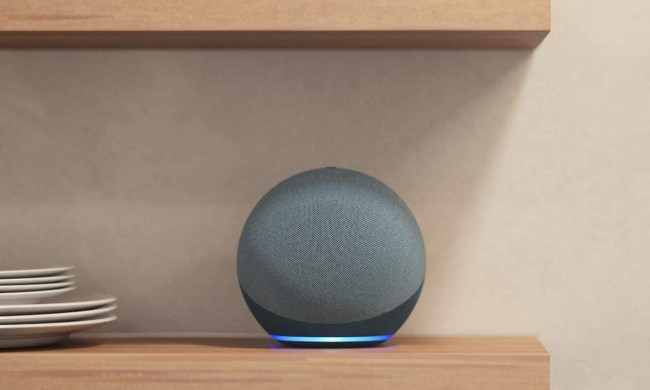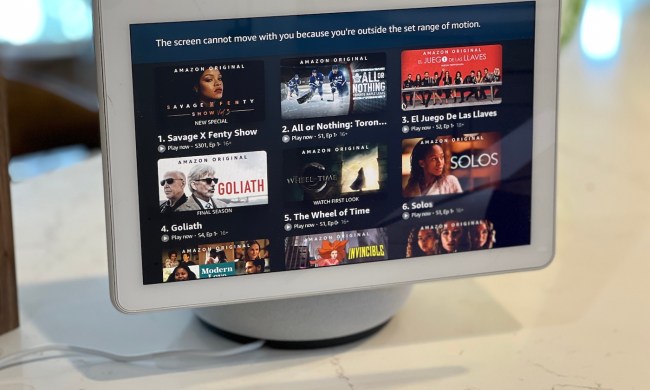If you’ve been watching for the latest smart tech and coolest new gadgets, then you’ve probably noticed the term “smart display” being used more often. Some products, like the Lenovo Smart Display (which we really liked), even have the phrase in the name. But what does “smart display” really mean, why is it becoming popular, and what differentiates it from all the other available tech? Let’s take a closer look.
Smart display: The easy definition

A smart display is any voice assistant smart speaker designed to be used around the home, which also includes a sizable touchscreen. Specifically, these devices have touchscreens that you can use for more than just controls—screens that support entertainment, informational videos, video chats, and much more. They can also connect to and control other smart devices in the house.
In practice, the smart displays we’re seeing on the market are smart Bluetooth speakers that are being augmented with screens to add more usability. Like smart speakers, you speak to a smart display that is powered by one of the common voice assistants (Amazon Alexa or Google Assistant). Amazon was one of the first to start this trend with its Echo Show and Echo Spot devices featuring
Smart display vs. tablet

“Wait,” you may be thinking, “I have a voice assistant and video apps on my tablet. What exactly is the difference here?” The big difference between the average tablet like an iPad and a smart display like the Echo Show is mobility. A tablet is designed to be carried with you, and is only stationary when you are. A smart display is meant to occupy the same spot for a long time—like a land phone or alarm clock—and doesn’t take up a free hand.
Smart displays also have a much tighter focus on voice assistant commands and video-oriented capabilities. This specialization makes smart displays very easy to use, even without training: You just talk to them. That can appeal to a broader audience than tablet computers. Smart displays are also set up so that you can control smart devices, like light switches and front door locks, with just your voice.
Smart display products on the market

Lenovo Smart Display: The Lenovo Smart Display, available in two different sizes (10-inch and 8-inch screens), uses
JBL Link View: This oval speaker with an 8-inch smart display also uses
LG WK9: LG’s entrant in the smart display category is a ThinQ Bluetooth speaker with a touchscreen that works via

Amazon Echo Show: The Echo Show was one of the very first smart speakers to add a smart screen. Of course, the big difference here is that Amazon uses its own interface and search functions with
Amazon Echo Spot: The Spot is a small, round version of the Show. It’s not really big enough for videos and is primarily intended to act as an alarm clock that can also function as a video chat phone. It’s cool if you use these functions, but is somewhat limited.
Google Home Hub: The
Facebook Portal:
Future of the smart display
Expect the number of smart displays on the market to keep increasing, at least for now (note that Apple does not yet have one out). This is still a new field, and brands will want to explore how it can be used. There’s a lot of room for growth and new specialties here.
There’s also a lot of room for new content experiences, including more ads…which could be a weak point in the smart display field. Currently, smart displays use a fairly mild ad format with generic, screensaver-like notifications when the smart display is not in use. But Google has developed more in-depth smart display ad campaigns that could pave the way for more advertisements on these devices—for better or worse.



